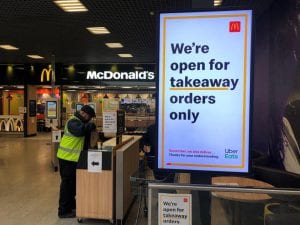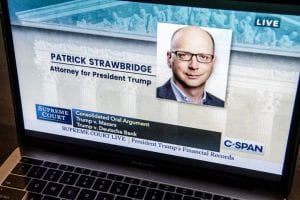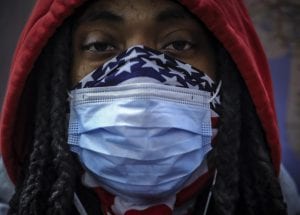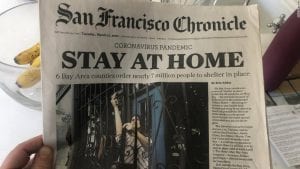 In order to combat the spread of COVID-19, people are making many changes in their habits and routines. Two central recommendations of public health officials are that people remain socially distant1 by staying six or more feet from people and avoiding non-essential trips outside the home, and that people wear masks when in public.2 This has raised questions about the government’s authority to impose social distancing and mask restrictions, as well as the rights and responsibilities of business owners to protect their employees and customers.
In order to combat the spread of COVID-19, people are making many changes in their habits and routines. Two central recommendations of public health officials are that people remain socially distant1 by staying six or more feet from people and avoiding non-essential trips outside the home, and that people wear masks when in public.2 This has raised questions about the government’s authority to impose social distancing and mask restrictions, as well as the rights and responsibilities of business owners to protect their employees and customers.
In some cities and towns, the government has attempted to enforce social distancing and mask wearing with sometimes troubling results. For example, in New York City, the epicenter of the pandemic in the U.S. for several weeks, police arrested at least 40 people for failing to wear masks or practice social distancing. Of those 40 people, 35 were black, reigniting concerns over racial disparities in the policing.3 As city officials in New York and other communities consider new ways to enforce public health regulations, some cities try novel approaches. For example, in Clearwater, Florida, the city is employing civilian ambassadors to walk the beaches and remind people of social distancing guidelines.4
WATCH: Americans Celebrate Memorial Day Amid Coronavirus Pandemic (CBS News)
Many people are upset by the social distancing guidelines and efforts to enforce them. There have been anti-shutdown protests in many states across the country and around the world5, including armed protests at the state capitol in Michigan.6 While such protests are constitutionally protected, the very act of protesting may be spreading the virus.7 Those who are upset at efforts to enforce public health measures have come into conflict with people, such as grocery store, retail, and restaurant employees who are responsible for enforcing their employers’ policies.
WATCH: Face Mask Rules Lead to Violent Confrontations
These challenges are straining our society in new ways, raising questions about the authority of government, the rights of individuals, and the meaning of the common good. In a future post, we will examine the ways in which the definition of freedom is being contested in these times.
Discussion Questions
- What are some reasons that people might have to insist on not wearing masks in public places?
- Should stores and other establishments be allowed to ban people who do not wear masks or follow social distancing guidelines?
- How should local governments encourage people to follow public health guidelines? Should police be involved to issue fines and make arrests? If not, why not? What other mechanisms do communities have?
- What role do we all have in preventing the spread of the virus?
- Should governments have the authority to enforce public health guidelines? Why or why not?
Further Resources:
- Can businesses refuse to serve customers who don’t wear masks? (from KIRO-7, Seattle’s ABC News affiliate)
- “6 Feet People!!!!” When Petty Neighbors Become Social Distancing Police (from Slate)
- Top 10 Excuses Offered For Not Wearing Masks Despite Covid-19 Coronavirus (from Forbes.com)
- Reopening Sparks The Debate About Who Should Enforce Social-Distancing Rules (from NPR)
Featured Image Credit: Mike Hewitt, Getty Images via Forbes.com
[1] Centers for Disease Control and Prevention.
[2] Centers for Disease Control and Prevention.
[3] New York Times: https://www.nytimes.com/2020/05/07/nyregion/nypd-social-distancing-race-coronavirus.html
[4] National Public Radio: https://www.npr.org/2020/05/15/857144397/police-back-off-from-social-distancing-enforcement
[5] Vox.com: https://www.vox.com/2020/5/20/21263919/anti-lockdown-protests-coronavirus-germany-brazil-uk-chile
[6] BBC.com: https://www.bbc.com/news/world-us-canada-52496514
[7] The Guardian: https://www.theguardian.com/us-news/2020/may/18/lockdown-protests-spread-coronavirus-cellphone-data#maincontent
 Last week, the Supreme Court heard arguments in two cases involving President Donald Trump’s tax returns and financial records, Trump v. Mazars and Trump v. Deutsche Bank. During the 2016 election, then-candidate Trump broke with tradition and refused to release many of his financial records and tax returns. The president is suing his accountants and banks to prevent them from releasing his personal financial information to Congress. President Trump claims that executive privilege protects him from releasing any of this information to Congress; attorneys for the House of Representatives argue that executive privilege does not apply here.1 So, what is executive privilege and why is it in dispute?
Last week, the Supreme Court heard arguments in two cases involving President Donald Trump’s tax returns and financial records, Trump v. Mazars and Trump v. Deutsche Bank. During the 2016 election, then-candidate Trump broke with tradition and refused to release many of his financial records and tax returns. The president is suing his accountants and banks to prevent them from releasing his personal financial information to Congress. President Trump claims that executive privilege protects him from releasing any of this information to Congress; attorneys for the House of Representatives argue that executive privilege does not apply here.1 So, what is executive privilege and why is it in dispute? The ongoing COVID-19 pandemic is stressing our healthcare system, our economy, and parents trying to teach their children at home. It is also highlighting significant COVID-19 racial disparities in access to quality health care.
The ongoing COVID-19 pandemic is stressing our healthcare system, our economy, and parents trying to teach their children at home. It is also highlighting significant COVID-19 racial disparities in access to quality health care. As the COVID-19 2020 news headlines continue to dominate, the American public is facing an onslaught of information about the pandemic. Social and traditional media are covering developments, spreading opinions, and broadcasting statistics about COVID-19. There has been a strong association between coronavirus media coverage and an increase in public attention on the virus itself and in web searches for such terms as “N95” face masks.1 The role of media in the COVID-19 pandemic is significant in shaping public behavior, so as we head into the next phase of the pandemic, journalists and the general public are being forced to consider what role the media should assume moving forward.
As the COVID-19 2020 news headlines continue to dominate, the American public is facing an onslaught of information about the pandemic. Social and traditional media are covering developments, spreading opinions, and broadcasting statistics about COVID-19. There has been a strong association between coronavirus media coverage and an increase in public attention on the virus itself and in web searches for such terms as “N95” face masks.1 The role of media in the COVID-19 pandemic is significant in shaping public behavior, so as we head into the next phase of the pandemic, journalists and the general public are being forced to consider what role the media should assume moving forward.






